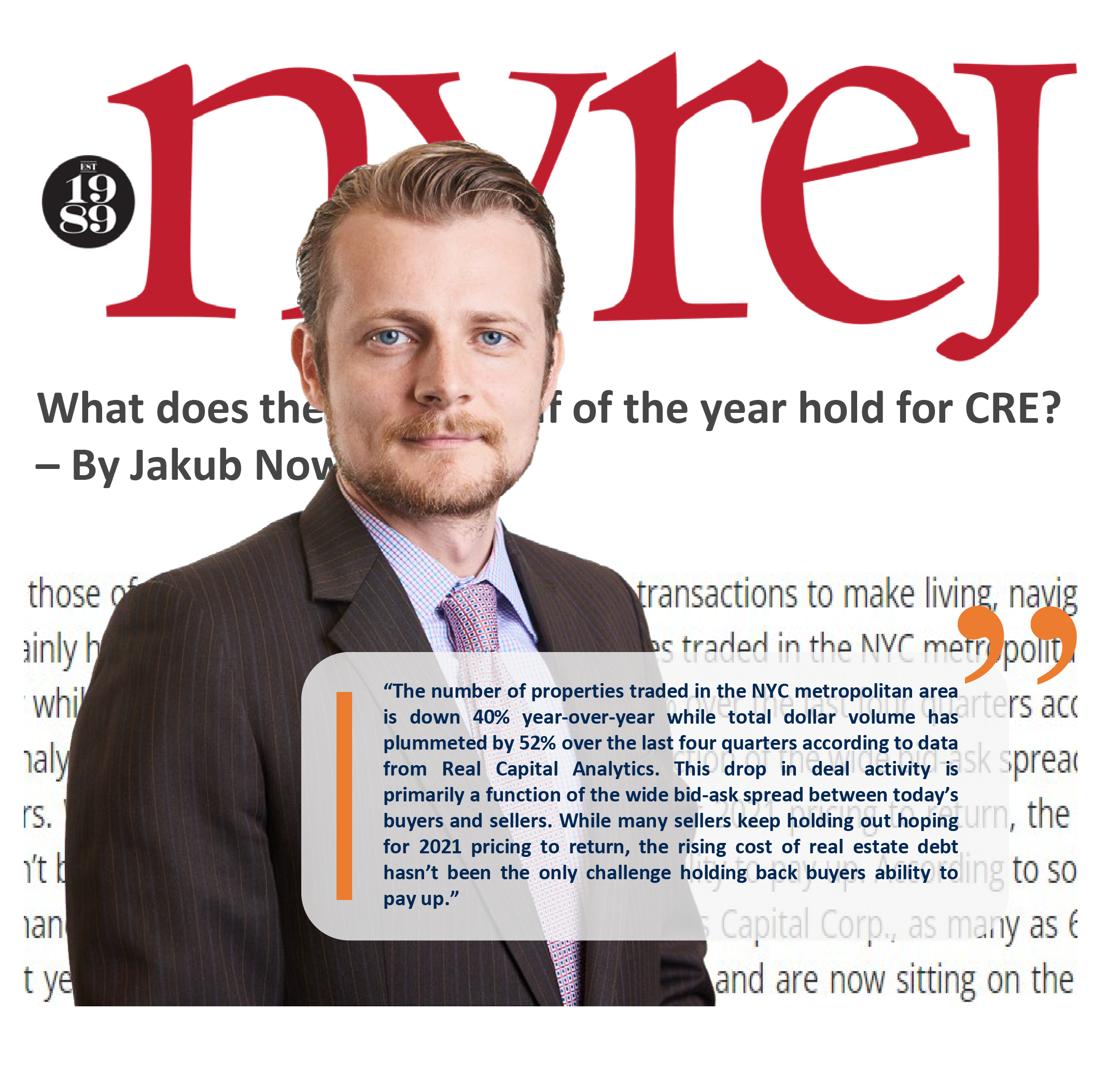
What does the second half of the year hold for CRE? – by Jakub Nowak
Articles Blog Post
September 20, 2023
With summer now in full swing, it’s time to reflect on the first half of 2023. It has been one heck of a ride. The CRE news cycle during the last six months has been dominated by rising interest rates, predictions of a looming recession, a regional banking crisis, office vacancy rates in New York City remaining stubbornly high and Albany’s failure to reinstate some form of an Affordable New York (formerly 421-a) tax abatement. On a positive note however, inflation (the primary driver of rising interest rates) has dropped to about half of where it was at it’s peak in late 2022, while recessionary jitters have yet to materialize in a meaningful way.
In all, for those of us relying on commercial real estate transactions to make living, navigating the first half of this year certainly had its challenges. The number of properties traded in the NYC metropolitan area is down 40% year-over-year while total dollar volume has plummeted by 52% over the last four quarters according to data from Real Capital Analytics. This drop in deal activity is primarily a function of the wide bid-ask spread between today’s buyers and sellers. While many sellers keep holding out hoping for 2021 pricing to return, the rising cost of real estate debt hasn’t been the only challenge holding back buyers ability to pay up. According to some of my partners active on the financing side of the business at Marcus & Millichap’s Capital Corp., as many as 60%-70% of bank lenders active last year have ceased their lending activity altogether and are now sitting on the sidelines waiting for the dust to settle.
The constraints on the availability of CRE debt coupled with recessionary fears has resulted in a flight to quality across all of the City’s major real estate asset classes. Tracking transactions on a daily basis, our team has seen deal activity concentrate on properties that are perceived as a safe bet and a hedge against further rate increases or economic troubles. Cash-flowing, high occupancy commercial buildings with strong tenancy in prime locations have been dominating transaction activity in the industrial, office and retail sectors. At the same time, dollar volumes for free-market multifamily properties and condominium development in the City’s best neighborhoods have dwarfed those for rent stabilized properties and development sites in tertiary markets.
Meanwhile, the rising cost of debt and dropping property values has placed a tremendous amount of pressure on owners with floating rate or maturing debt - especially on highly leveraged assets in the rent stabilized and office sectors. Unless a workaround can be agreed to with their lender, many of these owners will be forced to sell at a loss or return the keys to their lender. We expect this type of activity to increase in the near future. If there is not enough equity left in a deal to make the lender whole, we might start to see repossessions and foreclosures. The longer rates stay on their upward trajectory, and the more of these financing-driven sales materialize, the stronger the downward pressure on prices will be until the market stabilizes.
Only a few months ago, I was musing about a possible leveling off of rates, based on inflation dropping to 4.05% - less than half it’s 2022 peak of 9.1%. However, June’s employment data has instigated some reconsideration. The most recent figures indicate a further decrease in the unemployment rate, down to 3.6% from 3.7% a month before, while wages have stayed steady. Such strong job numbers will keep the pressure on the Federal Reserve to keep rates high.
Nonetheless, there are subtleties within these figures that need attention. The most recent employment growth numbers were the lowest they have been since December 2020 - suggesting a degree of slowing in the labor market and tempering the overall employment picture. These factors, seemingly insignificant on the surface, could actually be a harbinger of stability. A moderate cooling in the labor market, combined with steady interest rates, could usher in a period of calm that might increasingly look like the “soft economic” landing we had all been hoping for.
As we enter the second half of the year, the key indicators considered here suggest that a period of economic stability is possible. Nonetheless, uncertainty persists, and areas of distress in the CRE market will remain a source of strong interest for those of us with entrenched interests. A more complete picture will emerge as we get closer to 2024, but for the time being, cautious optimism may be the best attitude as we emerge from a turbulent first half of the year.
Jakub Nowak is a senior managing director investments | team lead at The Nowak Group of Marcus & Millichap, Brooklyn, N.Y.




